Childhood laced with lead
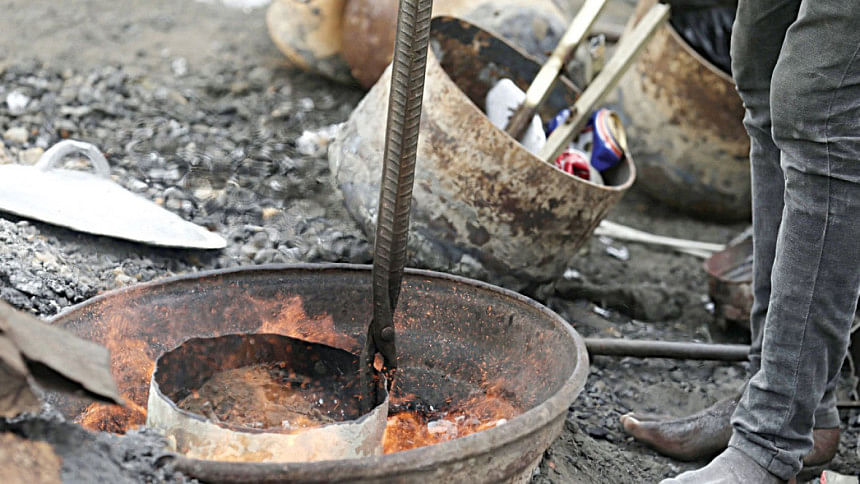
Around 98 percent of 500 surveyed children aged between two and four in the capital were found to have concerning levels of lead in their blood, posing serious health risks, according to a joint study by icddr,b and Stanford University released yesterday.
The study found that children in Dhaka south have higher blood lead levels (BLLs) than those in the north, as the southern part of the city hosts more lead-polluting industries.
Proximity to industrial sites is the main driver of elevated BLLs. Other sources include indoor second-hand smoke, high levels of dust containing lead, and household exposures such as lead-containing cosmetics, cookware, and paint.
Jesmin Sultana, assistant scientist at icddr,b, presented the findings at a discussion titled "Fighting Lead Poisoning in Bangladesh -- Progress Made, Challenges Ahead" held at icddr,b.
There is no safe level of lead in the blood. However, the US Centers for Disease Control and Prevention (CDC) considers BLLs above 35 micrograms per litre to be concerning, especially for young children.
Lead exposure can seriously harm a child's health, causing damage to the brain and nervous system, slowed growth and development, learning and behavioural issues, hearing and speech problems, lower IQ, decreased attention levels, and poor academic performance, according to the CDC.
Speaking at the programme, Tahmeed Ahmed, executive director of icddr,b, said, "Lead poisoning is silently robbing our children of their future potential."
It hinders brain development and causes nutritional deficiencies, ultimately setting back the future of Bangladesh itself, he said.
"We must act with resolve to eliminate all sources of lead emissions so that every child can grow up healthy and intelligent, and play an active role in national development," he added.
Prof Steve Luby of Stanford University emphasised that lead exposure severely impairs brain development and causes cognitive deficits and IQ loss that can affect future generations.
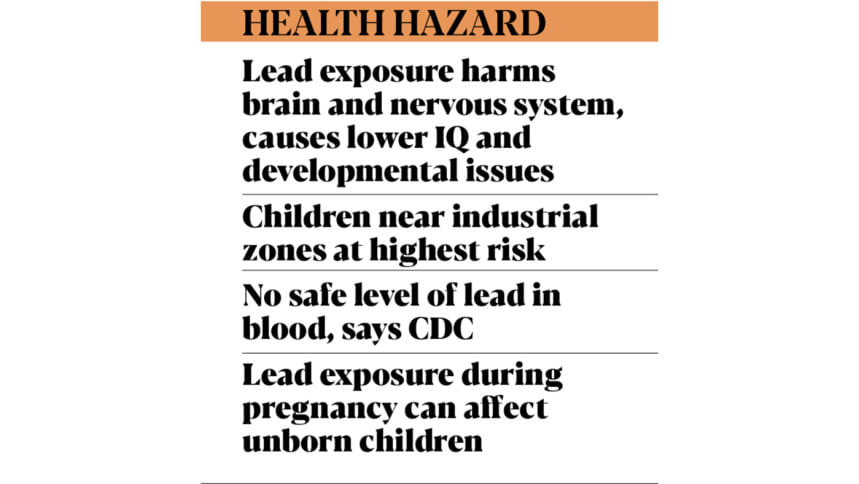
"Lead enters the body in multiple ways -- through the air we breathe, the food we eat, contaminated soil or dust, and even during pregnancy through the placenta. That's why it's nearly impossible to avoid lead exposure unless we address the root causes in our environment, especially those we can manage and control," he said.
Dr Sarah Salway, senior director of Health Systems and Population Studies Division at icddr,b, said lead pollution is a major yet often overlooked public health issue in Bangladesh. Children living near polluting factories are among the worst affected.
KEY FINDINGS
Jesmin Sultana said the study, conducted between 2022 and 2024, surveyed 500 children aged two to four in Dhaka. Every child had lead in their blood, and 98 percent had levels above 35 micrograms per litre, which is considered a concerning level.
Children living within one kilometre of battery manufacturing, recycling, or other lead-related industries had 43 percent higher BLLs than those living more than five kilometres away.
Those within 0.5km had 24 percent higher levels than those living 5km away.
Spending over six hours outdoors daily raised BLLs by 18 percent among children living within 2 km of such sites, said Sultana.
If household members smoked indoors, children had 12 percent higher lead levels. A 50 percent increase in household lead dust led to a 2 percent rise in BLLs.
She also said children from the richest households had 17 percent lower BLLs than those from the poorest families.
Although everyone in Dhaka is at risk, around 3.8 million people living within 2km of battery-related or lead-smelting industrial sites face a higher risk, said Sultana.
RECOMMENDATIONS
The study recommends relocating small cottage industries and larger factories that deal with lead-acid battery manufacturing or smelting outside Dhaka city.
It also suggests reducing smoking, especially indoors; regularly mopping indoor areas to reduce dust; and promoting the use of lead-free products like batteries, paint, cookware, jewellery, surma, and amulets.
Individually, people are advised to eat foods that are rich in iron, calcium, and vitamin C.
Citing a UNICEF report, Mahbubur Rahman, project coordinator at icddr,b, said Bangladesh ranks fourth globally in the number of children affected by lead, with an estimated 3.6 million affected.
He also noted a positive development: a sharp decline in lead contamination in turmeric following policy interventions.
After studies by Stanford and icddr,b confirmed turmeric as a major source of lead exposure for pregnant women, national actions followed, led by Bangladesh Food Safety Authority, which included awareness campaigns, regulations, and enforcement.
As a result, contaminated turmeric samples dropped from 47 percent in 2019 to nearly zero in 2021, he said.

 For all latest news, follow The Daily Star's Google News channel.
For all latest news, follow The Daily Star's Google News channel. 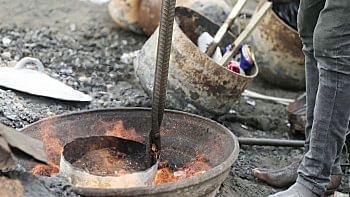




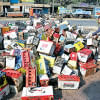


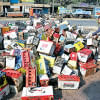


Comments